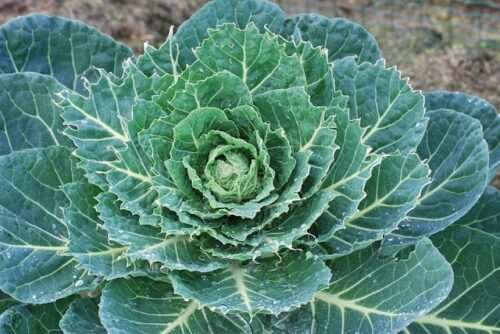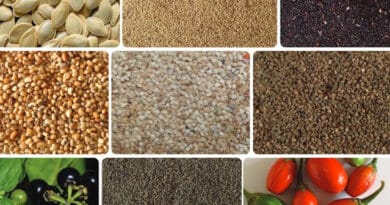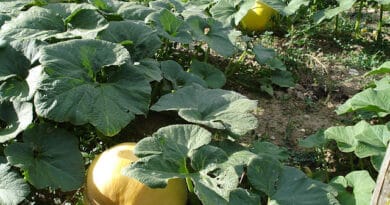Cultivation of Brussels Sprouts in India; A Full Information Guide
Cultivation of Brussels Sprouts: simple to cultivate and can yield a good crop all winter long, even after frost.
Brussels sprouts ( Brassica oleracea L.Var. gemmifera De) belong to the family Cruciferae. Brussels sprouts are hardy, long-season crops and very closely resemble the cole crops. This vegetable crop is grown in the cool hill region. The sprouts or heads resemble miniature cabbages. It is borne in the axial of leaves along and around the main stock progressively from the bottom upwards. It looks like a miniature cabbage and grows to 60 to 90 cm. tall.
The crop gets its name from the city of Brussels in Belgium, where this crop has been grown for several hundred years. This plant is of obscure European origin and was possibly grown in Belgium as early as 1200.
Nutritive Value of Brussels Sprouts;
The nutritive value of Brussels sprouts per 100 g of an edible portion is given below:
| Serving Size: 100 g | DV | |
| Calories | 43 kcal | 0% |
| Total Carbohydrate | 9 g | 3% |
| Dietary Fiber | 3.8 g | 15.00% |
| Sugar | 2.2 g | |
| Protein | 2.8 g | 5% |
| Choclestrol | 0 | 0 |
| Saturated fat | 0.1 g | |
| Protein | 3.4 g | 6% |
| Sodium | 25 mg | 1% |
| Potassium | 309 mg | 11% |
| Iron | 7% | |
| Vitamin C | 141% | |
| Vitamin B6 | 10% | |
| Magnesium | 5% | |
| Vitamin D | 0% | |
| Cobalamin | 0% | |
| *Percent Daily Values are based on a 2,000-calorie diet. Your daily values may be higher or lower depending on your calorie needs. | ||
Climatic Requirements for Brussels Sprout Cultivation:
Brussels sprouts grow well in cool, humid regions. It gives the best yield if it has grown in the temperature range of 15-18 degrees Celsius.
Soil & its preparation for Brussels Sprouts cultivation;
It can grow on all types of soil. But sandy loam soil with a pH range between 6 – 6.8 is more suitable for its cultivation.
Land should be prepared by 5 or 6 ploughings followed by planking. Planking is essential for pulverizing and leveling the soil.
Important Varieties of Brussels Sprouts:
(a) Varieties are classified according to height.
(1) Dwarf (below 50 cm): early dwarf, dwarf gem, catskill, and dwarf perfection.
(2) Intermediate (50 to 60 cm): Long Island Half-Dwarf, Convent Garden, Dalkeith, and Paris Market.
(3) Tall Caboue 50 cm: Amagar Market and Danish Prize.
(b) Varieties are classified according to the life cycle
(1) Early varieties: Top Score, Peet Gynt, and Passiful.
(2) Late varieties: Lanocolar, Sunline, and Goldmine.
(3) Hybrid varieties: King Arthur, Peer Gynt, Craton, Merton, Rola cross, Uremo Post, Topgrade No. 6977, Topscore, Trigomox, Berner Market (Swiss hybrid), Jade cross (Japan hybrid), Lanceolat, Orion, etc.
Descriptions of some important varieties are as follows:
1. Jade Cross E: The sprouts of this variety are big and can be removed more easily from the stalk than with the mother strain. It takes 90 days to mature after the transplant.
2. Royal Marvel: The sprout arrangements of this variety are very compact. This variety is highly productive and is resistant to ‘bottom rot’ and ‘tip burn’. It is ready to harvest after 85 days of transplanting.
3. Bubbles: This variety is hardy and can tolerate warm conditions. Importantly, it shows the rust resistance and its maturity period is about 80-85 days.
4. Rubine: It is a novel variety. The sprouts give a reddish appearance. It is a late-maturing variety and takes about 105 days to harvest.
5. Oliver: The sprouts of this variety are attractive in shape and can be detached easily from the stalk. Its maturity is about 85 days after the transplant.
6 . Prince Marvel: The sprouts of this variety are compact & sweet. It is ready to harvest after 90 days of transplanting
Sowing of Brussels sprouts seeds;
Transplanting
The seedlings are transplanted when they become 15-20 cm tall. The seedlings are transplanted with 50 cm spacing.
Manuring in Brussels Sprouts: Fertilizers scheduled per acre:
Intercultural operation in Brussels Sprouts ;
Two or three hoeing-cum-weedings should be done to remove the harmful weeds as well as to make the soil porous, which permits better aeration and thus promotes root growth. The terminal buds or lower leaves are often removed to get good and early sprouts. Removal of the terminal bud produces larger sprouts, but the number is decreased. The yield may also reduce if the lower leaves are removed.
Irrigation in Brussels Sprouts;
Harvesting of Brussels Sprouts;
Yield of Brussels sprouts:
Cultivation of Celery in India: A Full Information Guide
Cultivation of Sprouting Broccoli in India; A Full Informational Guide




